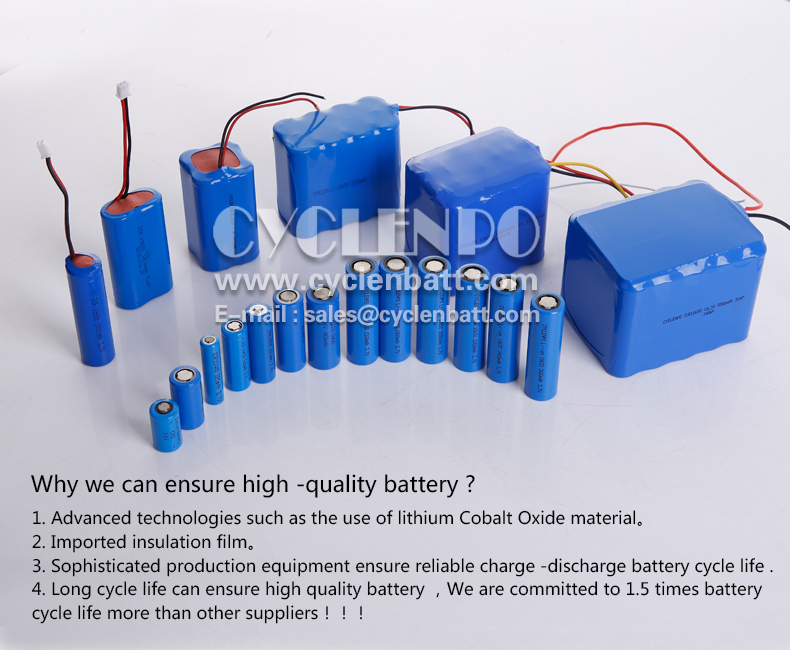As the cruising range of new energy vehicles is limited, how to improve the battery life affects the entire market. In the battery industry, the ternary lithium battery quickly occupied the 3C, automotive and other markets with numerous advantages, and gradually replaced the traditional lead-acid battery. For the traditional battery, the ternary lithium battery has the advantages of long life, energy saving, no pollution, low maintenance cost, complete charge and discharge, light weight, etc. In some publicity materials, some people think that the life of the ternary lithium battery is long, Is that ture? How many times does its life cycle ? Let us uncover the truth.
What is a ternary lithium battery?

In nature, lithium is the lightest metal with the smallest atomic mass. Lithium is chemically active, and it is easy to lose electrons that are oxidized to Li+. The standard electrode potential is -3.045V, and the electrochemical equivalent is 0.26g/Ah. These characteristics determine that it is a material with a very high specific energy. The ternary lithium battery refers to a lithium secondary battery using three kinds of transition metal oxides of nickel, cobalt and manganese as a positive electrode material. It fully integrates the good cycle performance of lithium cobaltate, the high specific capacity of lithium nickelate and the high safety and low cost of lithium manganate. It synthesizes nickel by molecular level mixing, doping, coating and surface modification. A multi-element composite lithium intercalation oxide such as cobalt manganese is a lithium ion rechargeable battery which has been widely studied and applied.
Theoretical life is only moderate
The life of the ternary lithium battery is calculated after the use of a certain degree, the proportion of the capacity attenuation, directly to the end of the capacity life of zero. The industry algorithm is generally that the ternary lithium battery is discharged once fully charged, which is called cycle life. During use, irreversible chemical reactions inside the lithium battery can cause a decrease in battery capacity, such as improper use, or use at extremely high or low temperatures. For example, the decomposition of the electrolyte, the deactivation of the active material, the collapse of the positive and negative structures, the reduction in the number of lithium ion insertion and deintercalation, and the like. Experiments have shown that higher rate discharges result in faster attenuation of the capacity. If the discharge current is lower, the battery voltage will approach the equilibrium voltage and release more energy.
The theoretical life of ternary lithium battery is 1200 times full charge and discharge, which is the complete cycle life. According to the frequency of use, it is fully charged and discharged once every three days, 120 times full charge and discharge every year, and the service life of ternary lithium battery reaches ten years. Even if there is loss during use or the number of days of charge and discharge is reduced, it can reach eight years. Note that here is the capacity life. After eight years, the capacity of the ternary lithium battery will still be more than 60%. This is the standard. Sexuality.
The theoretical life of a ternary lithium battery is moderate in commercial rechargeable lithium batteries. Lithium iron phosphate is about 2000 times, and lithium titanate is said to reach 10,000 cycles. At present, the mainstream battery manufacturers promise more than 500 times in the ternary battery specifications produced by them (charge and discharge under standard conditions), but after the batteries are assembled into battery packs, due to consistency problems, mainly voltage and internal The resistance cannot be exactly the same, and its cycle life is about 400 times. The manufacturer recommends that the SOC use window be 10%~90%. It is not recommended to carry out deep charge and discharge. Otherwise, it will cause irreversible damage to the positive and negative structures of the battery. If it is calculated by shallow charge and shallow release, the cycle life is at least 1000 times. In addition, if the lithium battery is often discharged in a high rate and high temperature environment, the battery life will be greatly reduced to less than 200 times.